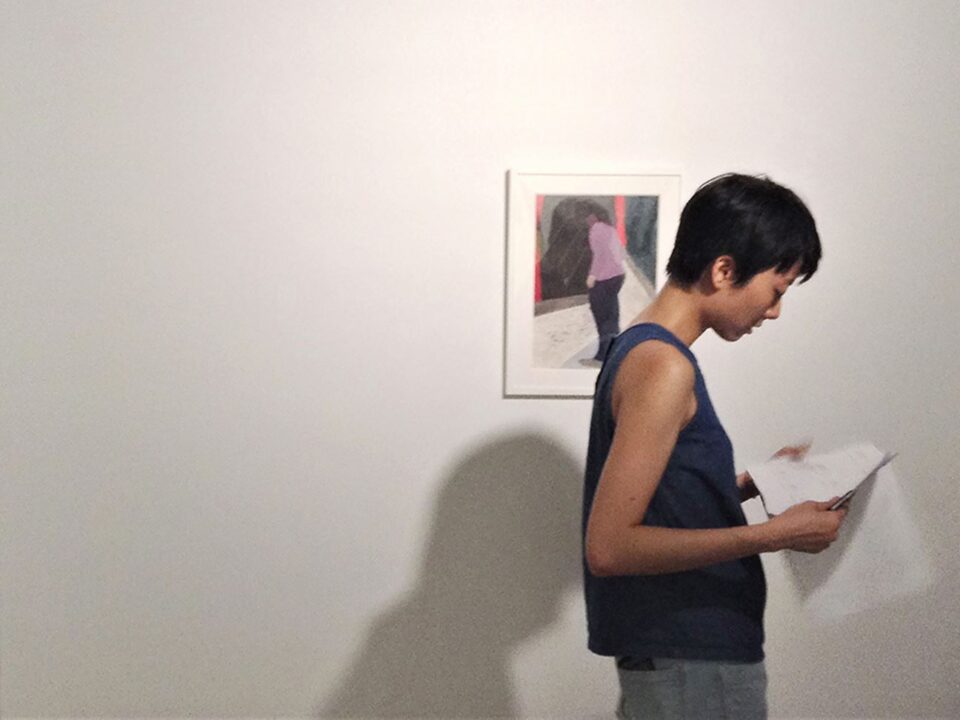
Firenze Lai (b. 1984, Hong Kong) is an artist living and working in Hong Kong.
Lai frequently depicts anonymous figures as subjects, and explores the issues of psychological landscapes, the mind and body, human relationships, collectiveness, social experiences and space. Her paintings demonstrate a willingness to portray everyday humanity with sympathy yet anonymity, with shapes, angles and colours that evoke both recognition and distance.
Her paintings have been exhibited in various international locations including the 10th Shanghai Biennale (2014), the 2015 New Museum Triennial, and the 57th Venice Biennale (2017), as well as different local venues such as Para Site (A Journal of the Plague Year. Fear, ghosts, rebels. SARS, Leslie and the Hong Kong story; 2013) and Tai Kwun Contemporary (Contagious Cities: Far Away, Too Close; 2019). Her work has been the subject of solo exhibitions in Hong Kong and abroad, in Guangzhou, China (Turbulence, Mirrored Gardens, 2015) and Saint-Étienne, France (Firenze Lai: L’équilibre des blancs, MAMC+, 2019).
In this conversation, Lai talks about being an Asian contemporary female artist and sheds light on her creative process as well as on the evolution of her artistic practice, especially during the current pandemic.
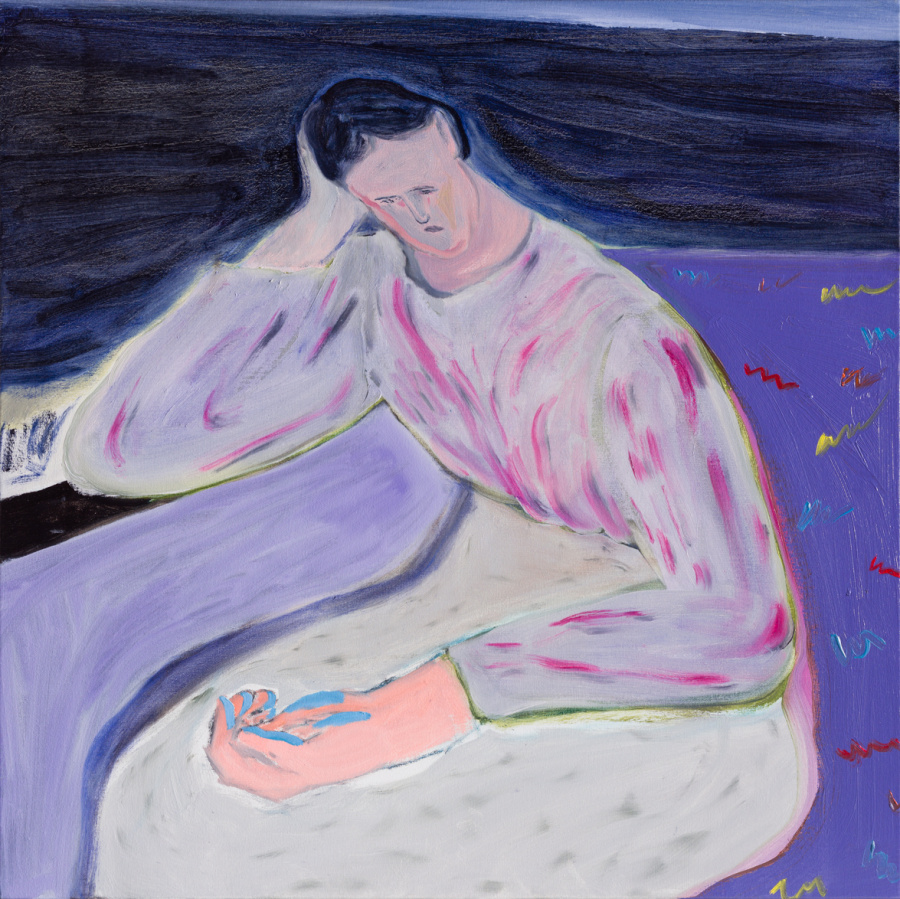
Firenze Lai, Bus Journey (2013) 
Firenze Lai, Central Station (2013)
Bianca Callegaro: Could you tell us about your evolution as an artist? Your journey after graduating, working as designer and then being a full-time artist…
Firenze Lai: After graduating from an art school in Hong Kong, I worked as a freelance book designer, it was hard to make a living, I had to work very long hours every day. I usually started drawing and painting after midnight, when the design works were done. This pattern went on for a few years. One day – it was around 2010/2011 – I decided I should try to work full time as a painter, to see whether that would possible at all.
BC: As an emerging non-Western woman artist were there any challenges you had to face throughout your professional career?
FL: There are times when I feel offended, but not exactly as an artist. For example, I was once teased by an old man in an art museum: I was trying to take a close-up photo of a very small etching with my phone, just like the other 100+ visitors in the same room, and this old man, much taller than me, raised his voice: “You do know it’s on the internet, don’t you? You can download it! Do you know the website?”. Then he laughed. Racism and discrimination of all kinds is deeply rooted in some people’s hearts. I’m afraid there’s no easy solution. It doesn’t matter if I’m an artist or not, it always gets personal. It can be your gender, your sex orientation, your age, your nationality, your education, and the list goes on. I can see that things are starting to change now, at least in the art world, on the institutional level, but it’s still a long way to go.
BC: How would you define your style?
FL: I don’t define my style. I translate what I see and feel into a visual language, mostly as a way of deconstructing rather than constructing. For me “style” is dangerous, as it’s about accumulating and constructing, about building circuits, which then become rules and formulas; and when there are rules and formulas, I can’t paint, it’s not right for me, and it certainly isn’t a nice way to paint.
BC: Do you exclusively work with paintings and drawings, or have you tried other media?
FL: Once in a while I do printmaking. I’d like to try sculpture one day, because I’ve encountered some spatial issues that I couldn’t solve with painting, so I hope that then I’d be able to bring the answers and experience back into painting. All things go back to painting for me.
BC: Let’s talk about your creative process. How do you go about creating a new piece? Do you experience creativity bursts and on-the-spot inspiration or do you research and develop your subject for a long time before getting to the canvas?
FL: That’s hard to answer. I don’t trust creativity bursts; an idea alone is not enough for me to start a painting. I always know what to paint, because images are in my head or in me for so long that I don’t even have enough time to make them happen and make them right. It has gotten a lot more difficult, sometimes it takes me much longer to finish a work than before. And yes, I do my research and study every day. I intendedly absorb everything and everyone around me, their fleeting presences, small gestures, the vibes, anything usual and unusual. These experiences accumulate and internalise. But painting isn’t a way to document these experiences, it’s a way to interpret, to study the visible and the invisible in life.

Firenze Lai, Run Run Run (2010). 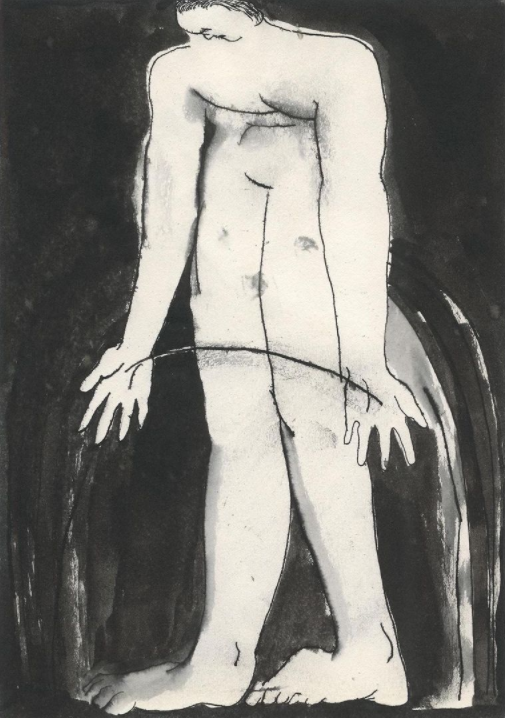
Firenze Lai, I Build My Own Rainbow (2020). 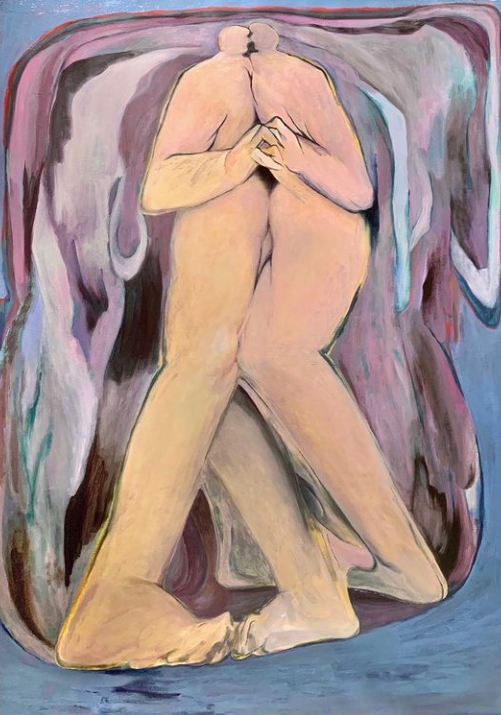
Firenze Lai, Dance Dance Dance (n.d.).
BC: Your figurative painting has a somewhat abstract quality, is that an intentional choice? Also given the mysterious nature of your subjects, how do you choose titles for your works?
FL: Yes, it is. Let me put it this way: I rarely do portrait, I only did one as far as I can remember, and the painting was made a few years after I met that person, just from memory. What I do is figurative painting, it isn’t portraiture since I don’t paint someone in particular. I wish for the figures depicted in my work to be “everyone”, so that more people can relate to it – that is what I have been trying to achieve. Likewise, I try to make the background and the situation in the picture not overly specific, because it has to be interchangeable: the same things can happen in other times and places, with other people. I aim to develop a sense of empathy in my work, but that cannot be achieved if things are over-specific or too abstract.
Titles are very important, it’s like passing a note to the viewer. Sometimes it’s quick and intuitive, sometimes I’d struggle for months to come up with a matching word or phrase, and sometimes I just can’t find the right title.

BC: You choose very intense and vibrant colour palettes in your paintings. What meaning do you attribute to colour? Do the colours you use have any symbolical, iconographical connotations?
FL: I like all ranges of palettes: the bright or irritating or harmonious, and even the monotone or dull and dirty ones. I prevent myself from developing a taste for palettes, at least not for now, as it’s a lazy thing to do. When I’d find myself repeating old palettes, I questioned myself on whether that was really necessary or just a lazy choice.
I believe colour is highly subjective. The same colour can be significant for me but not for someone else from a different background, therefore I seldom attribute “meaning” to a specific colour.
BC: As an artist living and working in Hong Kong, you have experienced several socio-political changes first-hand, particularly in recent years since the Umbrella Revolution. Does politics play a part in your work? Has your relationship with politics changed over time?
FL: Of course. It’s hard to process, the influence of politics is inevitable and profound. I often question myself, as a painter, on what I could do under such circumstances.
Most people in Hong Kong are dealing with different level of PTSD since 2019. Nothing is settled, I wonder if the situation will ever get settled and how we can get out of it. Probably never. Friends and family told me to look away, at least for a while, but that seems impossible for me. The relationship between me and politics? I live with it now, there’s no way for us to escape from politics.

Firenze Lai, Politics (2016). Oil on canvas.
BC: With the global diffusion of Internet and social media we are now living a digital world which overflows with images and visual stimuli. In light of that, what role do you think art plays in the 21st century?
FL: I think art will prevail; it always has. Art moves people, leads them to question assumptions, and to feel and experience things differently. It provides a different kind of perspective on the situation we are dealing with. Even in the Internet era we are currently in, art has its place. Its format may be constantly changing, but art will always be there, because humans need art.
BC: Now let’s move on to the present situation. Have you started any new projects during lockdown?
FL: I couldn’t work for quite a long time after what happened in 2019 in Hong Kong, and I was only able to resume working during the pandemic. I started with watercolour, that I had been very hesitant to use before. Then, I recently went back to oil painting. I’m working on larger canvases now, and I am happy that I’m finally able to work again.

Firenze Lai, Trial (2020). Watercolour on paper. 
Firenze Lai, Dreams of Flying (n.d.). Watercolour on paper.
BC: Do you think the COVID19 crisis has had an impact on your creativity? What result do you think this will have in the long run?
FL: In the past year, people around the world are on high alert with their bodies and those of other people; they have developed some kind of new connection, a new social etiquette, and the desire and hesitation for the body of one another is growing immensely. Its impact is beyond having to wear a mask or being confined at home. I’m looking closely at these changes and how they affect people in the long run.
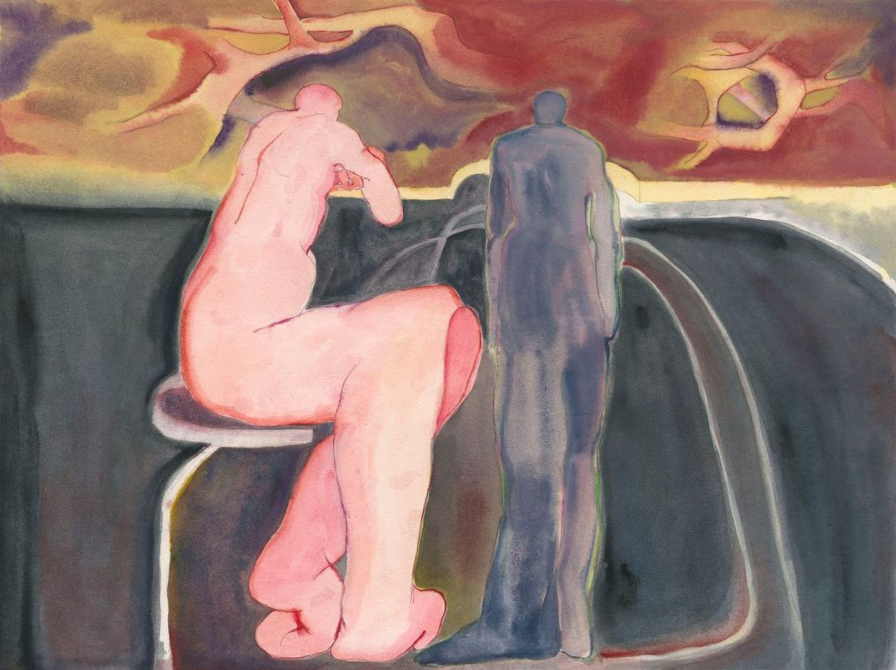
To discover more of Firenze’s work, follow her on Instagram (@firenzelai) and check out her website: https://firenzelai.tumblr.com/